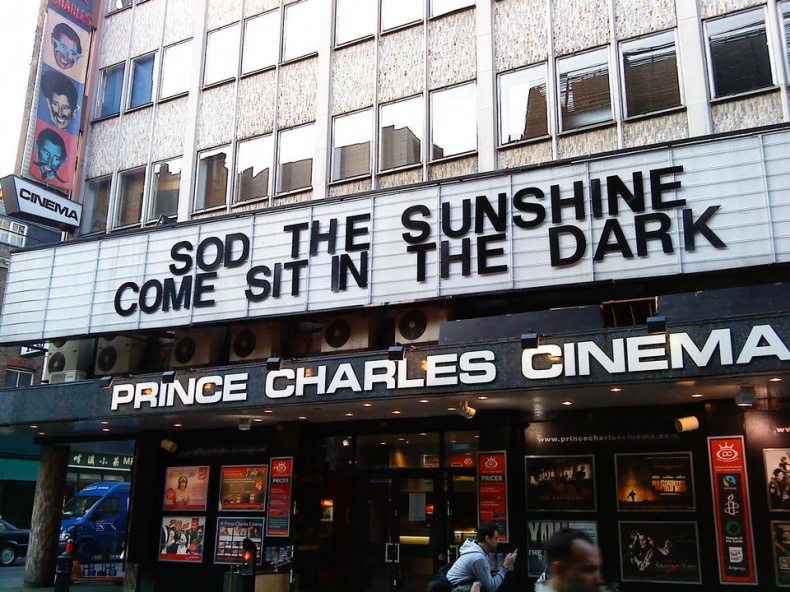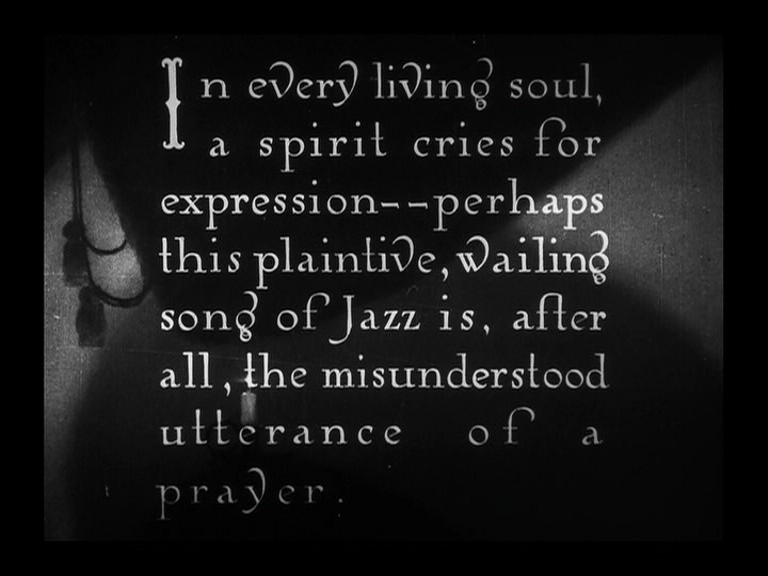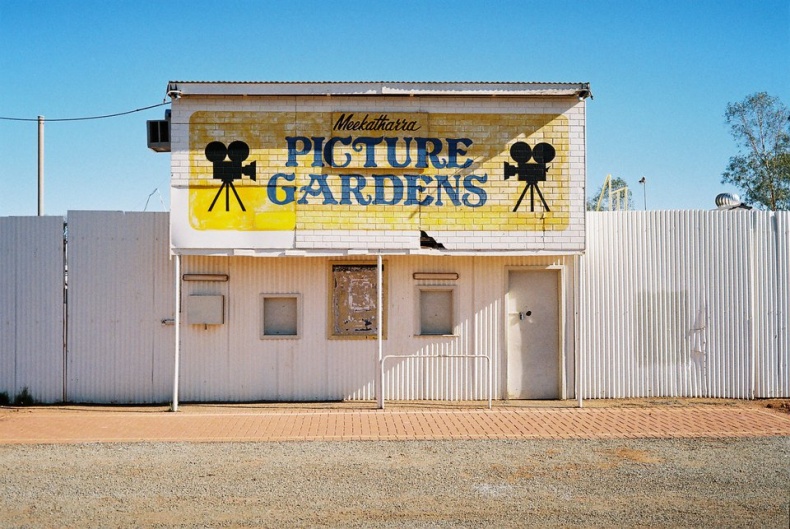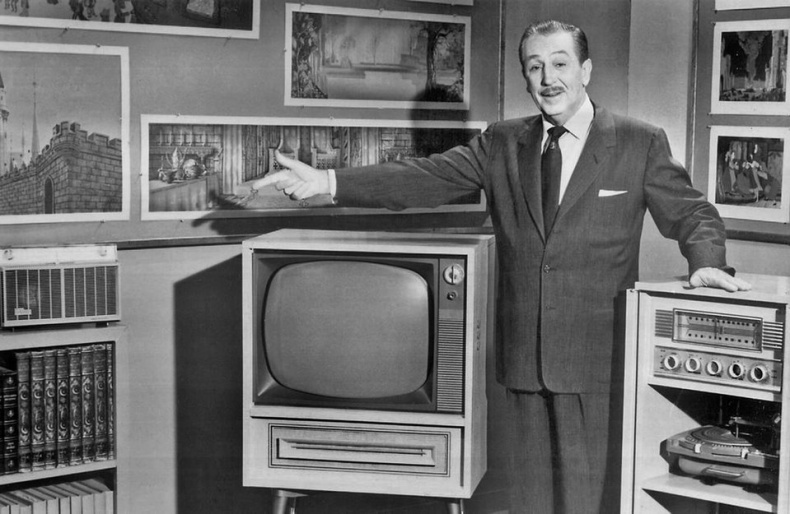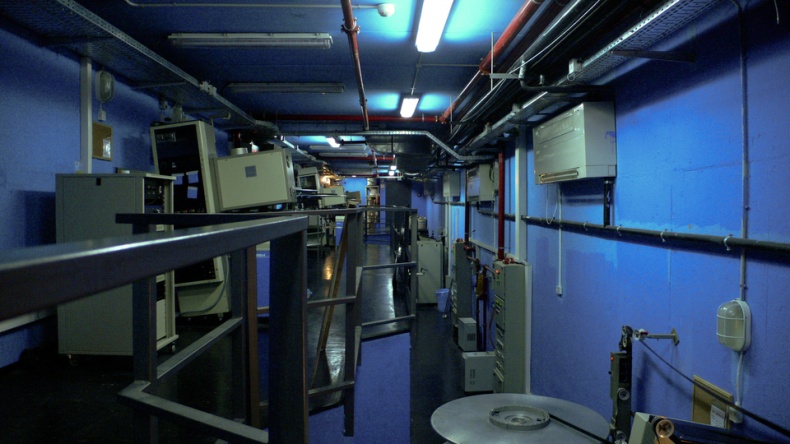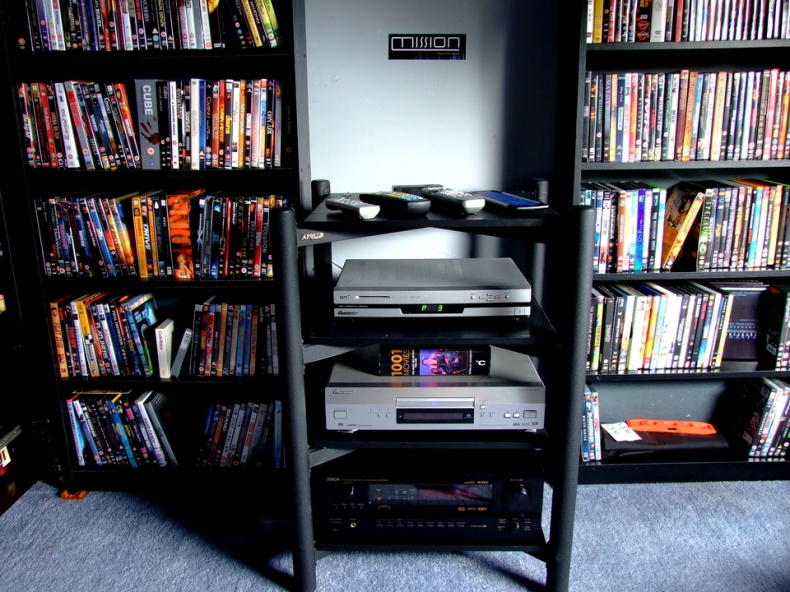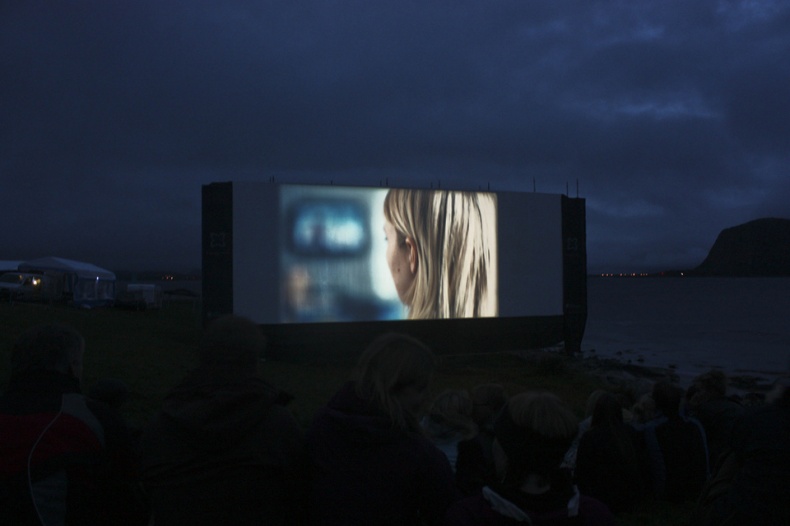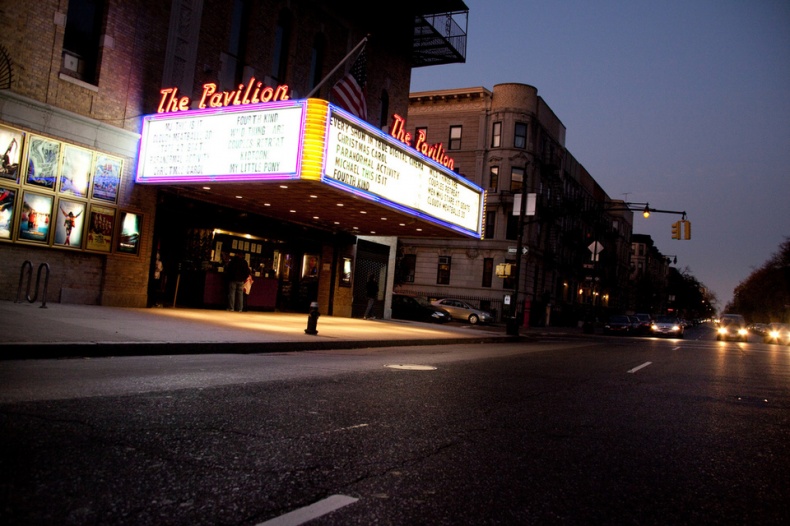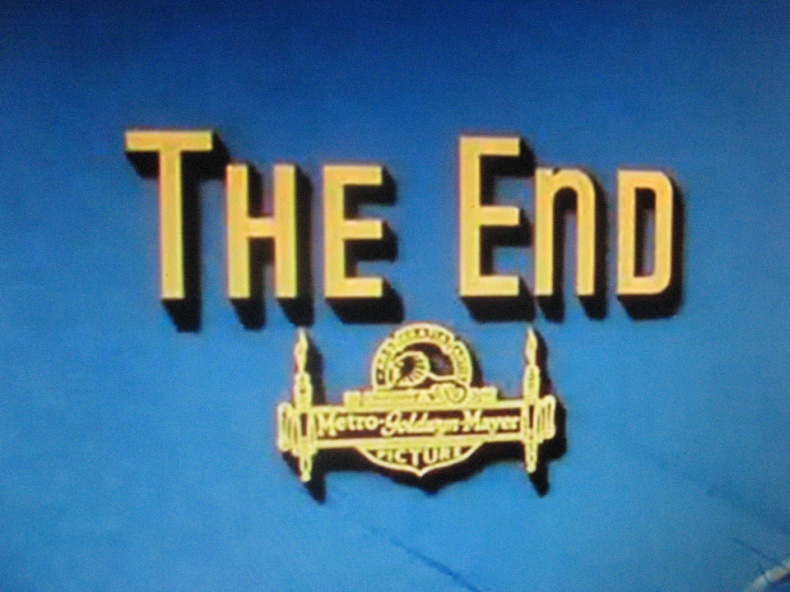Cinema Advertising by James Nash
Let me ask you a question: when was the last time you popped out to the cinema to watch a movie? I bet the vast majority of you will have to think long and hard to come up with an answer. Most of us cannot remember the last time we sat in a darkened movie theatre with an overpriced bag of stale popcorn in our laps and a gigantic soda cup propped next to us in our armrest.
"It's gotten way too expensive,"
says Angelo, a father of two who says he is unwilling to spend more than fifty dollars to take his family to the theatre.
"The tickets alone cost about $13 each and then when you factor in the drinks and snacks, your simple afternoon out with the kids ends up costing you more than a pair of Nike running shoes!"
During the Great Depression which crippled the North American stock exchange between 1929 and 1939, more people went to the movies than in times of economic prosperity!
"More than half the [American] population went to the movies at least once per week in the early '30s,"
says Will McKinley, freelance writer and video producer who also posts regularly on his industry blog â Cinematically Insane.
"The unemployment rate in the U.S. was nearly 25% in 1933, and the average price of a movie ticket was less than twenty-five cents. Movies were an affordable luxury for cash-strapped Depression Era audiences, and they provided a much needed escape from the challenges of daily life."
Paramount
These downtrodden people who literally had nothing to their name would spend their last dime on films that took them away to a better, more prosperous place â namely Hollywood, California â and they would spend two or possibly even more hours sitting in a darkened theatre laughing or crying with their friends and loved ones. Once the film was done rolling, they would reluctantly leave their seats and immerse themselves back into their dismal lives of trying to find employment and queuing in bread lines for food.
In 1930 alone the weekly cinema attendance was 80 million people. That amounts to approximately 65% of the U.S. population. Now, compare that figure to the weekly cinema attendance from the year 2000: only 27.3 million people went to the movies which translates roughly to a measly 9.7% of the resident U.S. population. In just seventy years the percentage of people visiting the cinemas on a weekly basis dropped by an overwhelming 55.3 percent. It's no wonder then that Hollywood has spent the last few decades trying to come up with an idea that will combat these falling figures. Unfortunately, without the ability to pinpoint the exact problem and figure out a definite game-plan and solution to their problem, there is no hope for Hollywood at this point. To help drive that point home, as of 2012 only 3% of U.S. consumers consider movie-going "a frequent source of entertainment."
Hollywood's Golden Age: 1927 â 1950
The release of Warner Bros' The Jazz Singer in 1927 single-handedly changed the way movies were made and seen throughout the entire world. The Warner Bros studio was the first in Hollywood to produce a "talking picture," a curious new phenomenon that some people labeled a flash-in-the-pan; a trend that wouldn't last very long. However, much to Warner Bros delight, The Jazz Singer proved to be an enormous box office success and movie audiences were quick to demand new sound offerings from the their favourite studios and film stars. One by one, each of the major Hollywood studios â Paramount, Metro-Goldwyn-Mayer, Fox, and RKO â had their sound stages re-wired and kitted out with the latest technological advances that would enable them to produce high quality sound pictures. The smaller Hollywood studios including Universal, United Artists, and Columbia soon followed suit and had their conservative stages converted to sound production as well.
Jazz Singer
By 1930/31 all Hollywood studios were producing talking pictures to the delight of millions of moviegoers throughout North America. This period of movie-making was heralded as Hollywood's Golden Age: never before had Hollywood reached such levels of creativity and success and never before had movie audiences' appetites grown to be so insatiable for new material. Because of this overwhelming demand, the Hollywood studios churned out dozens of films each month which featured the period's most popular stars in the film industry's most popular genres: westerns, dramas, comedies, and musicals.
One of the reasons why the major Hollywood studios were able to dish out so many films in so little time was because they all stuck to a system which, in time, became known as the Studio System. Each major Hollywood studio employed a roster of in-house actors, directors, cameramen, editors, writers, and producers that were all contracted to work expressly for their home studio. Actors and directors were loaned out to other studios occasionally when special projects beckoned but for top dollar and nothing less.
"Hollywood studios were a one-stop shop, with all stages of production housed under one roof,"
explains Will McKinley.
"The major studios also owned movie theatre chains which allowed for guaranteed distribution channels for product."
Metro-Goldwyn-Mayer (MGM) was ranked as the number one studio in Hollywood from 1931 to 1941, an unprecedented eleven year run! MGM was known for its prestige films; glossy, swanky, tasteful and expertly produced films that were shaped by the studio's resident "boy wonder" Irving Thalberg. Movie audiences knew what to expect when they bought a ticket for one of MGM's masterpieces and they were rarely disappointed by what they saw on the screen. This is, in part, due to the studio's roster of stars which included film legends Clark Gable, Spencer Tracy, Joan Crawford, Greta Garbo, and John Barrymore. No other studio could boast such a stellar line-up which goes ahead and justifies MGM's boisterous tagline of having "more stars than there are in heaven!"
Cinema in the outback by brerttanomyces
Nineteen thirty-nine has gone down in history as Hollywood's greatest year. Never before has the movie industry produced such a splendid line-up of respected and highly rated films as it did all those years ago. Films like Gone With the Wind, The Wizard of Oz, Stagecoach, Wuthering Heights, Mr. Smith Goes to Washington, and Dark Victory were all issued release dates in 1939 and movie audiences went wild! If it was at all possible for spectators to overdose on creative greatness, they must have done so then. Each of the films I've just mentioned have lived on in infamy, achieving stratospheric success and notoriety for being some of the greatest motion pictures ever made. Even now, seventy-five years later, these films still have an audience and are often re-released in theatres for special limited screenings and classic movie festivals.
Hollywood's Studio System lasted well throughout the 1930s and early to mid-1940s but started to wane by the late 1940s. Studio bosses like Jack Warner, Louis B. Mayer, and Harry Cohn eventually lost their clout and the stars that they employed grew tired of working under stressful conditions and rigid contracts that essentially limited their talent and growth by keeping them pigeonholed in the same types of films and the same types of character roles.
"When the Supreme Court ruled that the studios were, in effect, a monopoly in 1948, it removed a key component from the business model: distribution,"
McKinley says.
"Coupled with the competition from television, the studio system was effectively dead."
That brings us to my next point ...
The Advent of Television
Many people widely believe that the birth of television brought about the death of the movie industry, and they're not too far off. Although mechanical television sets were sold commercially from 1928 to 1934 in the United Kingdom, United States, and what was then the Soviet Union, they did not come into wide use until much later. The cheapest sets manufactured before WWII in America cost $125, the equivalent of approximately $2,000 in 2014. The vast majority of the world's population could not afford to spend that much money on what was then viewed as an "experiment" and it wasn't until after the war that television sets hit the mainstream and became more affordable.
Uncle Walt by James Vaughn
Television usage in North America skyrocketed in the early 1950s with the lifting of the WWII manufacturing freeze, the advent of war-related technological advances, the expansion of television networks westward, the dip in television prices, and the amount of increased leisure time that people suddenly had on their hands. It should come as no surprise then that by 1954, 55.7% of the U.S. population owned a TV set. Eight years later, in 1962, that figure rose to a staggering 90 percent!
According to the U.S. Census Bureau, weekly movie attendance dropped from 80 million in 1940 and 90 million in 1946 to 60 million in 1950. By 1960 this figure dropped to an all-time low of 40 million. There was no denying the fact that most people were choosing to stay home, gather in front of the television, and spend their evenings watching new and exciting programming. Families were also choosing to spend their money on other big ticket items like new homes, cars, and furniture eschewing weekly movie ticket purchases altogether. To further illustrate that point, I came across some poll results that had been issued by Paramount in 1950 that revealed that families who owned one or more television sets decreased their film-going by a whopping twenty to thirty percent!
By 1959, Hollywood had become a television town, adapting its studios once more (just like they did at the end of the silent film era) to the production of television programs and films. Stars who had achieved stratospheric levels of success in films slowly migrated from the big film studios to the ever-expanding television networks, hoping to prolong their careers by making special guest appearances on the popular entertainment shows of the day including scripted sitcoms, talk shows, and game shows.
These special guest appearances were used for exposure and promotion, in a way getting television audiences excited for the stars' upcoming film releases and special projects. Hollywood knew it had a problem on its hands and this was their initial way of attempting to fix the situation. How do we tempt people back into the movie theatres? Put movie stars on television and get them to mercilessly plug their new films! Although this method is still used today, in the grand scheme of things, it did very little to help the situation permanently. Yes, people were still going to the movies to see their favourite film stars, but not in the huge numbers that Hollywood had become accustomed to in its heyday.
Projector Room at Multiplex by Ran Yaniv Hartsteln
Fast-forward a few decades and we now have all sorts of handy on-demand cable networks on television that we utilize to catch up on our favourite television shows and the latest movie releases. Our television sets have now become our cinema screens. Entertainment programs like Netflix have completely changed the way people watch movies; people can watch unlimited hours of films and television shows on their big screen TVs or even on their home computers, laptops, and mobile devices for a small monthly fee. Given such choice and freedom, why would anyone venture out to their local cinema when they could enjoy entertainment from the warmth and comfort of their own home - and for significantly less money? A Netflix subscription costs Canadians $7.99 a month whereas an adult movie ticket currently costs more than $15.00 (with a premium placed on any 3-D movie ticket).
The Rise of the Internet
Along with television, the Internet has also dealt a devastating deathblow to movie going. Online streaming and pirating has quickly become the norm for the all-important 18 â 24 age group that movie studios gear their films and advertisements toward. If you want to catch the latest superhero movie, you no longer need to spend a small fortune on a movie ticket â you can easily search for a pirated copy of the film online, download it, and watch it for free.
"One of the problems with the Internet that no one has solved is that for YouTube, Google, [and] Yahoo to exist, they thrive on piracy,"
explains Hollywood director John Landis.
"Now there are generations worldwide who believe that when they're downloading something for free, it's not theft. It doesn't even occur to them, so intellectual property has become nothing."
The Cinema Room by Stephen Bowler
If you're unwilling to commit a crime just to watch a film, you can wait until said picture becomes available on perfectly-legal iTunes and rent or purchase the film from there and gain the ability to watch it at home or on-the-go on your mobile device. Many industry professionals may argue that consumers are given too much choice nowadays â and they would be correct â but it's ultimately their job to solve that conundrum. Why not lower the price of a movie ticket, thus making it more competitively priced with the likes of Netflix and iTunes? Why not re-think the cost of cinema foodstuffs and snacks and make the purchase of these goods more affordable to the theatergoer? What the film industry needs to realize is that in order to get consumers back into movie theatres, consumers need to be tempted with things that they think will make their movie watching experience worthwhile. That brings me to the very crux of this article:
How does Hollywood fix the problem?
Although it's unlikely that the film industry will ever see weekly figures upwards of 50 million ever again, there are still some measures that Hollywood can use to raise weekly movie attendance figures even slightly if they wanted to.
Row in outdoor cinema by Christel Preteni
First things first: lower the cost of a movie ticket. In 1999, the average adult movie ticket cost Americans a little over five dollars. By 2010, that price had increased to a conservative eight dollars, but in 2014 the average cost of an adult movie ticket is $16.50 USD. Consumers can blame the influx of prices on gaudy "state-of-the-art" cinemas that cost a fortune to maintain, on movie studios' insistence on producing 3-D films that ultimately fall flat, and on cinemas that charge a premium for VIP experiences such as in-theatre dining and bottle service.
"What happened to just going to the movies to see a movie?"
wonders Sabrina, someone who frequented cinemas when she was a teenager but can't remember the last time she set foot in a modern cineplex.
"When I went to the movies all I wanted was a bag of popcorn, a can of pop, some friends sitting beside me and a good time. Now that same bag of popcorn costs something like ten dollars and a ticket to some lame movie costs as much as a monthly mortgage payment!"
Sabrina certainly nailed it on the head when she mentioned lame movies. Today's movie offerings do not even come close to comparing with the ones that were released during Hollywood's Golden Age. Original storytelling has gone the way of the dodo bird and the great character actors that made movies throughout the 1930s and 1940s are no longer present in modern day Hollywood. Today's actors and actresses â with the exception of a few â all resemble each other and pack no punch when it comes to appealing to the masses. It's almost as if Hollywood has grown bored of itself and coasts along on meager storylines and repetitive movie sequels.
"The studios are not in the movie business anymore,"
claims Landis.
"There are no original ideas. What there is â and this is something no one understands â is that it is never about the idea; it is about the execution of the idea. It really has to do with desperation, because they [studios] don't know how to get people into the theatres, so they bring back 3-D and make all this kind of s**t."
Cinema by Eelke
Gone are the days when each Hollywood studio prided itself on its collection of prestige films and its stable of talented, marketable Hollywood stars and its bevy of tireless screenwriters. Now, all that's left after the fall of the studio system is a blank space cranking out 3-D film after 3-D film that everyone's seen before and has ultimately grown tired of. According to Statista (The Statistics Portal), the most popular movie genre in North America is Comedy with ticket sales of 54.9 billion dollars US, so perhaps movie studios should eschew the manufacture of 3-D adventure films altogether. Comedies have ruled the nation's box office from 1995 to 2013. What Hollywood needs is an awakening, an "a-ha moment" in which it will reassess its faults and claw its way back up to the top of every consumer's list of priorities.
Better films, better stars, and better stories are what are needed. Add to that list cheaper, less cringe-inducing movie ticket prices and a return back to simpler cinema food and drink offerings and you've got yourself a plan worth putting into action. Movie studios and cinemas have gone too far above themselves by creating these overblown entertainment meccas that the public is just not willing to spend all their hard-earned money on. Back to basics, that's the name of the game â and what will inevitably aid the sagging movie industry if it's followed through on.
Off the couch and into the theatre seat - ready, set, GO!
The End by Eduardo
VBSKEM


